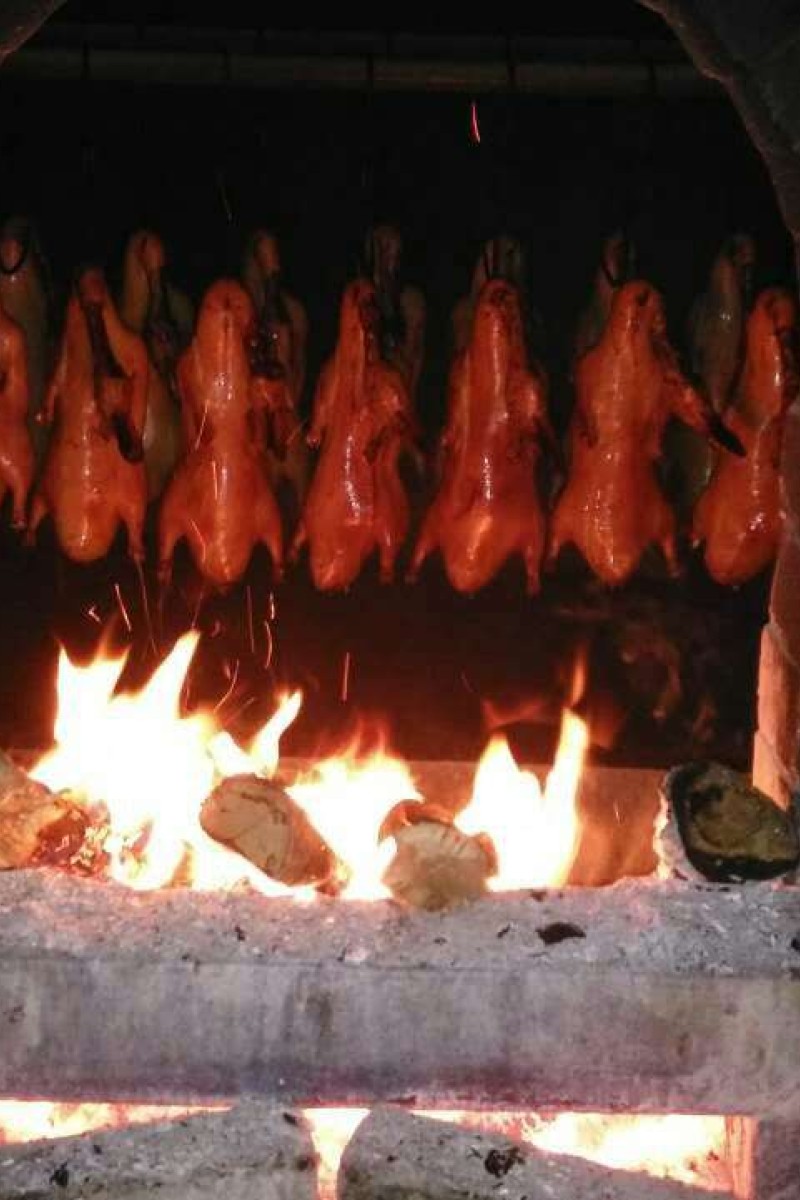
Why traditional Peking duck trumps machine-made version
Beijing’s kitchens are sticking to tried and tested techniques instead of newer, faster processes – and there’s a good reason for it
 Fireclay ovens combine taste and culture.
Fireclay ovens combine taste and culture. Peking duck is arguably the most famous dish in Chinese cuisine. And modern technology and improved cooking techniques mean that making crispy, tender duck is a lot easier now than it was 100 years ago. But despite these advances, many Beijing restaurants are choosing to stick to the traditional methods of preparation and cooking.
Earlier this month, Young Post spoke to Lu Xiaofei, executive chef at one of Beijing’s most celebrated Peking duck restaurants, to find out why he believes that the process of making authentic Peking duck is not something that can be replaced by machines.
According to Lu, who doesn’t want his restaurant to be named, many restaurants in Beijing still use a rustic, cavernous oven made almost entirely out of fireclay, a technique developed between 600 and 700 years ago.
The fire is carefully made with apple and peach wood to impart a slightly fruity flavour to the tender flesh. The temperature is carefully monitored to make sure the skin is deliciously crispy.
Lu says the Peking duck in Hong Kong has lost this distinctive “Beijing flavour” because they’ve simplified the traditional process to save time and money.
In Hong Kong, restaurants often use electric ovens to roast the ducks, which drastically reduces the amount of labour (and thus cost) needed, and also turns the procedure into an automatic and hands-free process. But electric ovens aren’t as good for cooking Peking duck.
“The machines are very inflexible, because there’s no way that you can roast one duck at a time in them. You can with the traditional method,” says Lu.
In a fireclay oven, when the chef sees something that’s not quite right, he can immediately use a long stick to adjust its position. Every inch of the duck is carefully checked by the chefs to ensure each duck is a perfect shade of amber that will glisten under direct light. It is this attention to detail that produces the kind of Peking duck that has earned a global reputation.
“Each of the steps has to be carefully followed from start to finish. Even one, small mistake may be a huge blow to the finished product,” says Lu.
But it’s not just about the taste. “Not only does it ensure that each Peking duck will be as close to the original flavour as possible, but it also ensures that cultural heritage will live on as well,” says Lu.
Although staying true to tradition is important, it doesn’t mean that the process hasn’t been updated to keep up with modern life. Unlike Peking duck in Hong Kong, which is lean and sweet, genuine Peking duck is oily and fatty. But with a growing population of health-conscious citizens, Lu's Peking duck restaurants has produced a new kind of “crispy-but-not-greasy” Peking duck.
“Adding an extra 30 minutes to the roasting time, and raising the temperature to 200 degrees Celsius instead of the usual 170 degrees not only gets rid of some of the fat and reduces the greasiness of the skin, but also makes the meat juicier and easier to chew,” says Lu.
This revolutionary update was only made possible by skipping what was once a very important step in the traditional method.
“By not pumping air into the duck before roasting, we are able to roast the ducks for a longer period of time, while at the same time accommodating the needs of our health-conscious consumers,” says Lu.
While a slice of Peking duck can be eaten in seconds, making just one duck in the traditional manner takes three days from start to finish, from plucking the feathers and adding maltose to colour the skin, to the 24 hour cooling period to dry the meat.
And that’s not including the time it takes for a chef to master the techniques to a level that matches Beijing’s strict standards – at least two years’ professional training and many more years of practise.
But Lu believes it’s all worth it, because this cultural legacy should live on.
“I always wanted to pursue the craft after graduation – even if it has meant that all I have done is make Peking duck for the past 10 years,” says Lu. “Seeing happy customers makes it all worthwhile.”
